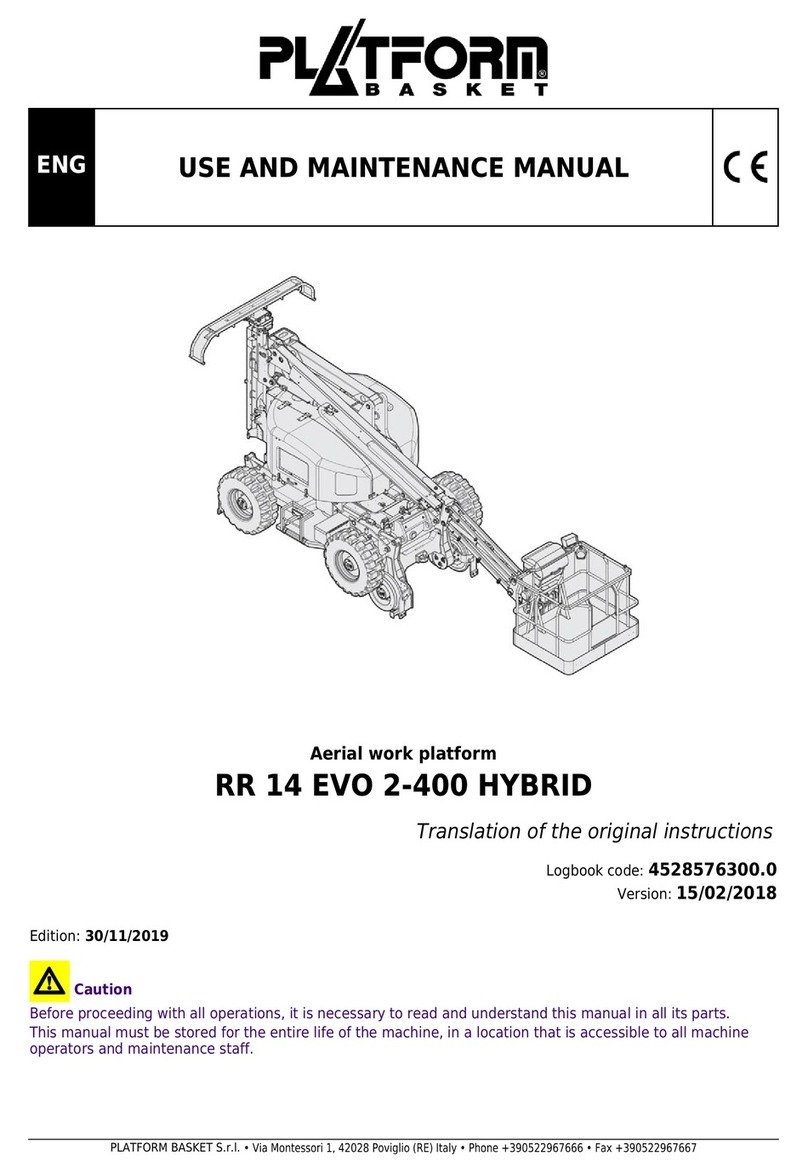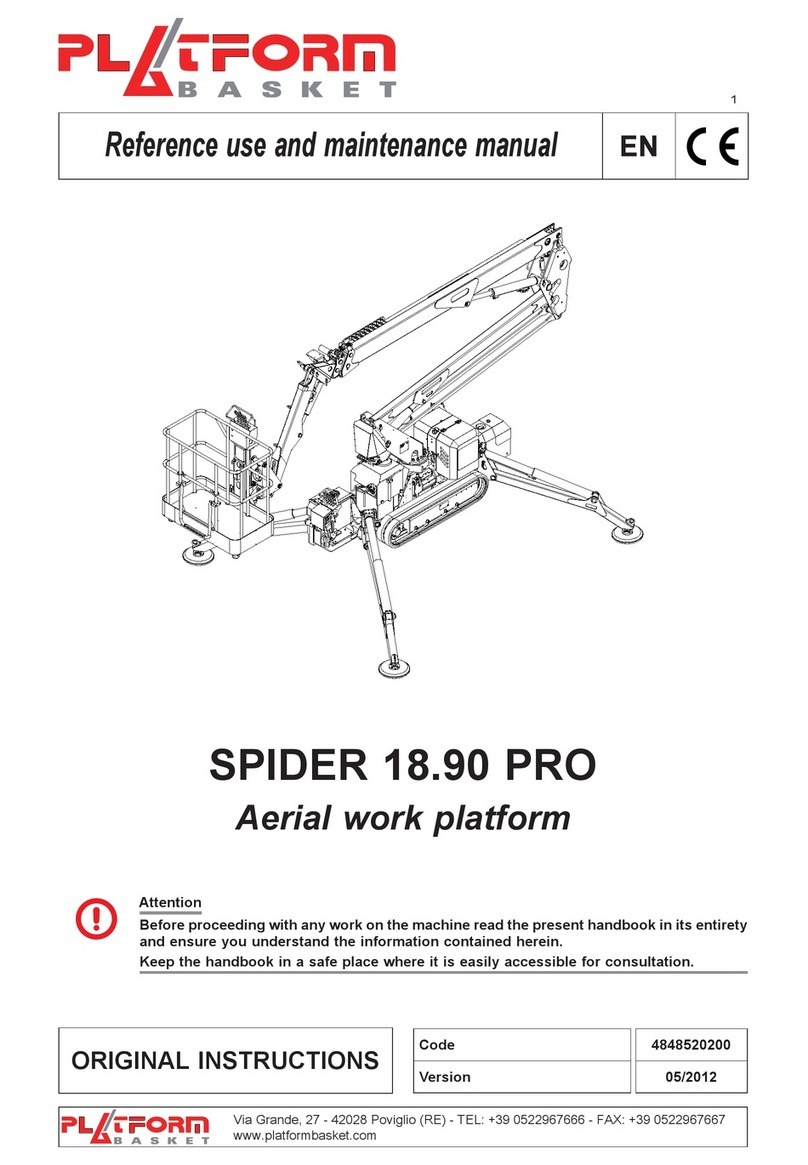
003
1575_003
SCOPO DEL MANUALE
Lo scopo di questo manuale è di fornire agli utenti le
nozioni essenziali in vista dell’esecuzione delle proce-
dure destinate al funzionamento appropriato della mac-
china, per gli scopi ai quali essa è destinata.Tutte le infor-
mazioni contenute in questo manuale devono essere
LETTE e ASSIMILATE prima di intraprendere qualsiasi
tentativo di far funzionare la macchina.
Il MANUALE DI USO E MANUTENZIONE è lo stru-
mento più importante. Conservarlo nella macchina. Ri-
cordare che NESSUNA ATTREZZATURA E’ SICURA se
l’operatore non rispetta le precauzioni di sicurezza.
Dato che il produttore non ha il controllo diretto sul
funzionamento e sulle applicazioni della macchina, le
procedure appropriate di sicurezza sono affidate alla re-
sponsabilità dell’utente e del suo personale.
Tutte le istruzioni contenute in questo manuale sono
basate sull’uso della macchina in condizioni di funziona-
mento CORRETTE, senza alterazioni e/o modifiche dal
modello originale. Qualsiasi alterazioni e/o modifica del-
la macchina è ASSOLUTAMENTE VIETATA, senza la
previa autorizzazione della PlatformBasket.
Questo “SIMBOLO DI SICUREZZA” viene usato
per richiamare l’attenzione su pericoli potenziali
che, se vengono sottovalutati, possono causare
lesioni o la morte.
La sicurezza del personale e l’uso appropriato
della macchina devono essere la preoccupazio-
ne principale. Segnali di PERICOLO, ATTENZIO-
NE,PRUDENZA, IMPORTANTE, ecc.sono inseri-
ti in ogni parte di questo manuale per evidenziare
le aree di pericolo. Essi sono definiti come segue:
PERICOLO
Indica una situazione imminente di pericolo che, se
non evitata, causerà gravi lesioni o la morte.
ATTENZIONE
Indicauna situazione potenziale di pericoloche,se non
evitata, può causare lesioni minori o di media entità.
Questo segnale può anche essere usato come avver-
tenza contro pratiche pericolose.
AVVERTENZA
AVVERTENZAo ISTRUZIONI indica una procedura in-
dispensabile per un funzionamento in condizioni di si-
curezza e che, se non eseguita, può causare un
malfunzionamento o un danneggiamento della mac-
china.
PURPOSE OF THE MANUAL
The purpose of this manual is to provide the users
with the essential knowledge for carrying out the proce-
dures necessary for the proper working of the machine
and for the purposes for which it is intended. All the infor-
mation contained in this manual must be READ and AS-
SIMILATED before undertaking any attempt to operate
the machine.
THE OWNER’S MANUAL is the most important in-
strument. Keep it in the machine. Remember that NO
EQUIPMENT IS SAFE if the operator does not observe
the safety precautions.
Since the manufacturer has no direct control over the
operation and applications of the machine, the appropri-
ate safety procedures are entrusted to the responsibility
of the user and the user’s personnel.
All the instructions contained in this manual are based
ontheuse ofthe machine whenit isworkingCORRECTLY,
without alterations and/or modifications to the original
model. Any alteration and/or modification to the machine
is SEVERELYPROHIBITED, without the prior authoriza-
tion of PlatformBasket.
This “SAFETY SYMBOL” is used to call attention
to potential dangers which may cause injury or
death if they are underestimated.
The safety of personnel and the appropriate oper-
ation of the machine must be the main concern.
DANGER,BEWARE,CAUTION,IMPORTANT,etc.
signs are included in everywhere in this manual
in order to highlight the danger areas. They are
defined as follows:
DANGER
Indicates a situation of imminent danger which will
cause serious injury or death if not avoided.
BEWARE
Indicates a potentially dangerous situation which may
cause minor or moderate injuries if not avoided.
This sign may also be used as a warning against dan-
gerous practices.
WARNING
WARNING or INSTRUCTIONS indicates a procedure
indispensable for safe operating conditions and if not
followed may cause a malfunction or damage to the
machine.





























